Thrips are primarily plant feeders. They feed on plant sap and can be difficult to control, as they are small and often hide under leaves. How long can thrips live without plants? We've researched this question for you, and here is what we learned.
Thrips may survive for several days without a food source. The actual length of time they can survive without a food source will vary depending on their life stage. The overall lifespan of thrips will also vary due to several factors, including temperature, humidity, and species.
Thrips will not be able to reproduce or complete their life cycle without a suitable host. Continue reading to learn more about how long thrips can survive without a food source.
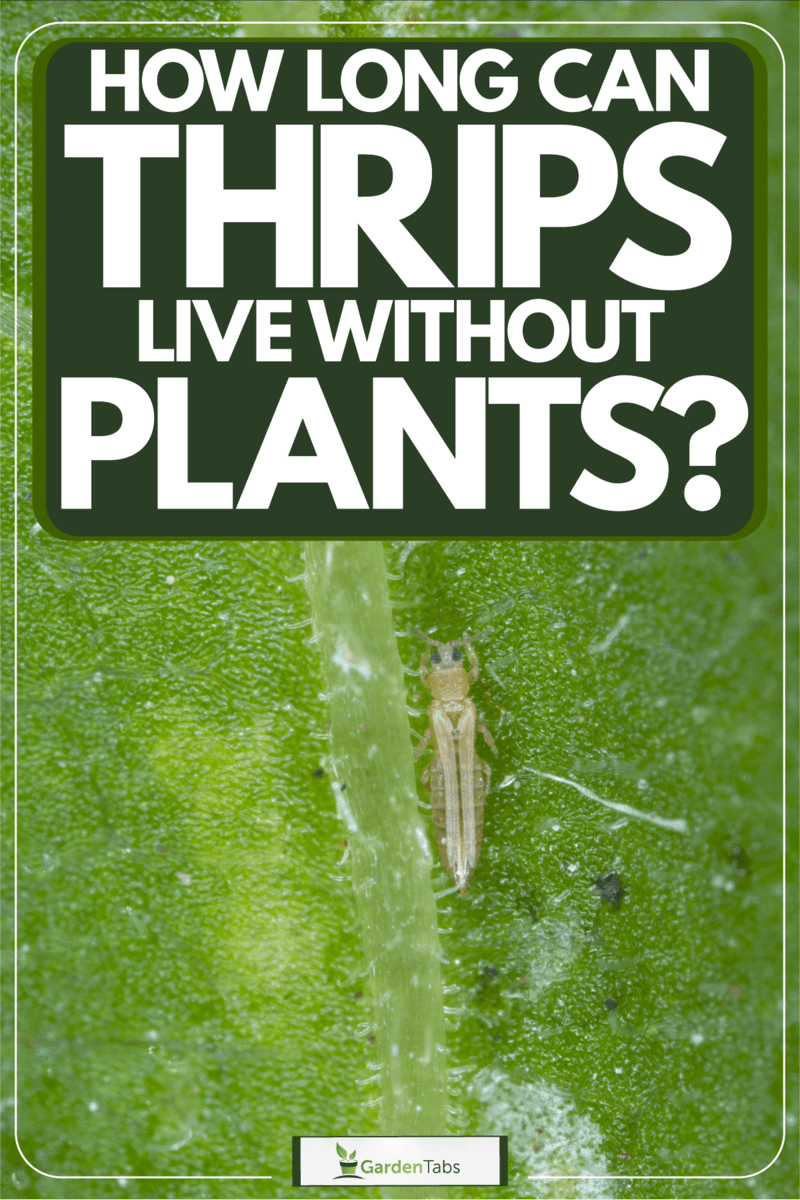
How Long Can Thrips Live Without Plants?
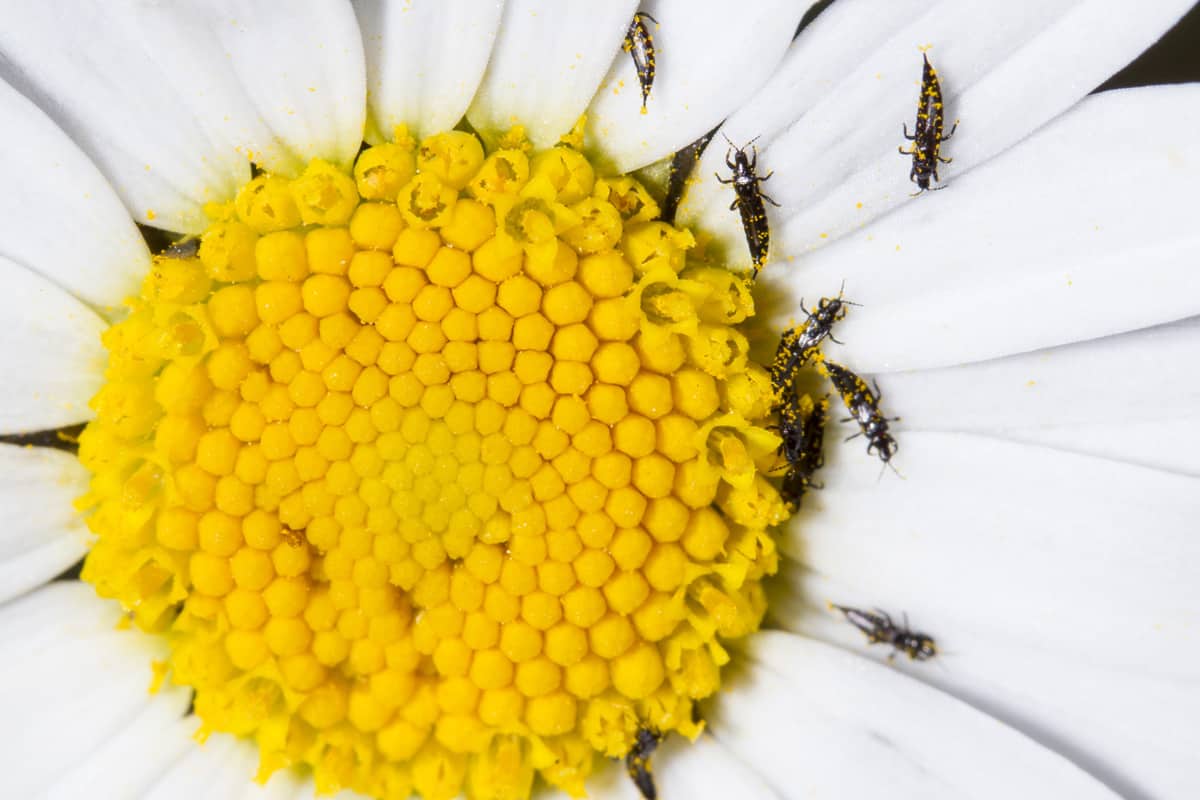
Thrips feed on plant sap. They are typically less than 2mm in length and are found in a wide range of habitats, including crops, flowers, and ornamental plants.
They rely on plant material for their survival. Adult thrips can live for a few days without feeding. However, they will need plants to reproduce and complete their life cycle.
Even if thrips are able to survive for a short time without food, they will eventually die without a plant to feed on. Note that the survival of adult thrips without food is also affected by other factors.
Active thrips may consume their stored energy reserves quicker than less active ones. Factors such as age, health, and reproductive status can also influence the survival of adult thrips without food.
How to Get Rid of Thrips

Thrips can be a persistent pest for crops and ornamental plants and entirely depend on plants for survival. Here are some ways to get rid of thrips:
Pesticides
Pesticides are a common way to control thrips. Insecticides containing pyrethrin are commonly used. Pyrethrin is an active ingredient in many different types of bug spray. It is a natural pesticide derived from chrysanthemums.
Click here to see this insect spray on Amazon.
It is also commercially available and an effective measure to reduce thrips. Be sure to exercise caution and follow the label's instructions when handling pesticides.
Other insects
Another effective method for controlling thrips is with other insects. Predatory insects such as lacewings, ladybugs, and predatory mites can help reduce the thrip populations.
Weed control
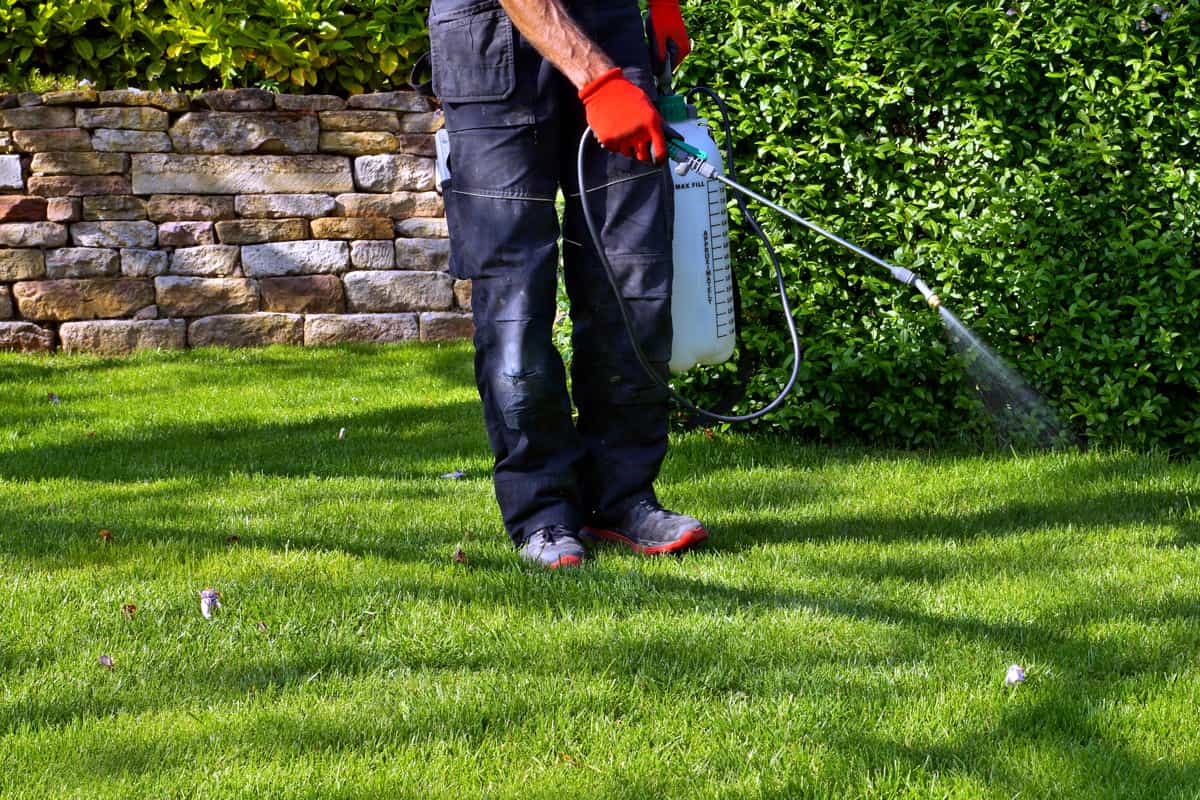
Removing weeds, keeping the area around plants clean and free of debris, and regularly pruning plants can help reduce thrip infestation.
Physical methods
Physical control methods such as vacuuming or using sticky traps can help to remove thrips from plants. Note that these approaches should be used with other methods.
Click here to see these sticky traps on Amazon.
Insecticidal soap
Insecticidal soap is a non-toxic option that can also be used to control thrips. The soap works by suffocating the thrips. Note that some soaps can harm beneficial insects.
Click here to see this insecticidal soap on Amazon.
Neem Oil
Another effective way to get rid of thrips is using neem oil. The active ingredients in neem oil can disrupt the feeding and reproductive systems of thrips, eventually leading to their decline.
Click here to see this neem oil for plants on Amazon
The effectiveness of neem oil on thrips may vary depending on the species of thrips, as well as the developmental stage of the insect.
Water
Water can effectively control and reduce thrip populations, but it may not kill them.
Professional Pest Control
Keep in mind that the effectiveness of these methods can vary depending on the severity of the infestation, the species of thrips, and the specific plant being targeted. Consulting with a pest control professional for advice is a good idea.
How Can Thrips Cause Damage?

Overall, thrips can cause significant damage to plants and crops, making it important to monitor and control their populations to prevent infestations. Here are some of the problems that thrips can cause:
Stunted growth
Thrips feed on plant tissues and can cause leaves, flowers, and fruit to become distorted and stunted.
Leaf damage
Thrips leave visible scars on leaves, making them appear white or brownish in color. This can reduce the overall appearance and marketability of ornamental plants.
Reduced fruit quality
Thrips can cause fruit to be misshapen, discolored, and generally unattractive. In severe cases, thrips can also reduce crop yields.
Transmission of plant diseases
Thrips are known to transmit several plant viruses, including Tomato Spotted Wilt Virus and Impatiens Necrotic Spot Virus, which can cause serious damage to plants and crops.
What Causes Thrips In Plants?
Thrips are often attracted to tender leaves, stems, and buds that are rich in nutrients. Environmental conditions such as temperature and humidity can also influence their population.
Warm, dry conditions are ideal for thrips. Thrips are also known to be attracted to certain colors, such as blue and yellow, and may be more attracted to plants that have flowers or other structures in these colors.
What Plants Can Repel Thrips?
Some plants are less attractive to thrips than others. It is important to note that while these plants may aid as a temporary solution for repelling thrips and other pests, they are not a complete solution. Here are some of the plants that may help deter thrips:
- Marigolds (Tagetes): Marigolds contain compounds that seem to repel a range of insects, including thrips. Planting marigolds around susceptible crops can help to deter thrips and other pests.
- Alliums (Allium): Alliums such as garlic and chives contain sulfur compounds that can repel thrips and other pests. Planting alliums around susceptible crops can help to deter thrips and other insects.
- Basil (Ocimum basilicum): Basil may help to repel thrips, as the plant contains compounds that are known to have insecticidal properties. The smell of basil is known to have pest-repellent properties.
How Fast Do Thrips Multiply?
The thrip population can fluctuate over time. The exact rate of reproduction will vary depending on factors such as natural enemies, temperature, humidity, and the availability of food.
Life Cycle Of Thrips
Thrips are small, slender insects that belong to the order Thysanoptera. During their life cycle, they undergo gradual changes in their appearance as they grow.
The entire life cycle of thrips typically takes about one to two months, depending on the species. The life cycle of thrips typically consists of the following stages:
- Eggs: Female thrips lay their eggs inside plant tissues or on the plant surface. The eggs are usually elongated and cylindrical and are about 0.2 mm in length.
- First instar larvae: The eggs hatch into tiny larvae, which are almost transparent and have two pairs of legs. They feed by scraping the surface of plant tissues and sucking up the released sap.
- Second instar larvae: After about a week, the larvae molt into a slightly larger and more pigmented form. They continue to feed on the plant tissues.
- Pre-pupae: After several more days, the second instar larvae molt again, transforming into pre-pupae. At this stage, they stop feeding and become more inactive.
- Pupae: After a few days, the pre-pupae molt into pupae. The pupae are non-feeding and usually found on the ground or in leaf litter.
- Adult: After several days to a few weeks, adult thrips emerge from the pupae. The adults are usually winged and are about one to three mm in length. They mate and lay eggs to start the cycle anew.
How Many Eggs Can Thrips Lay?
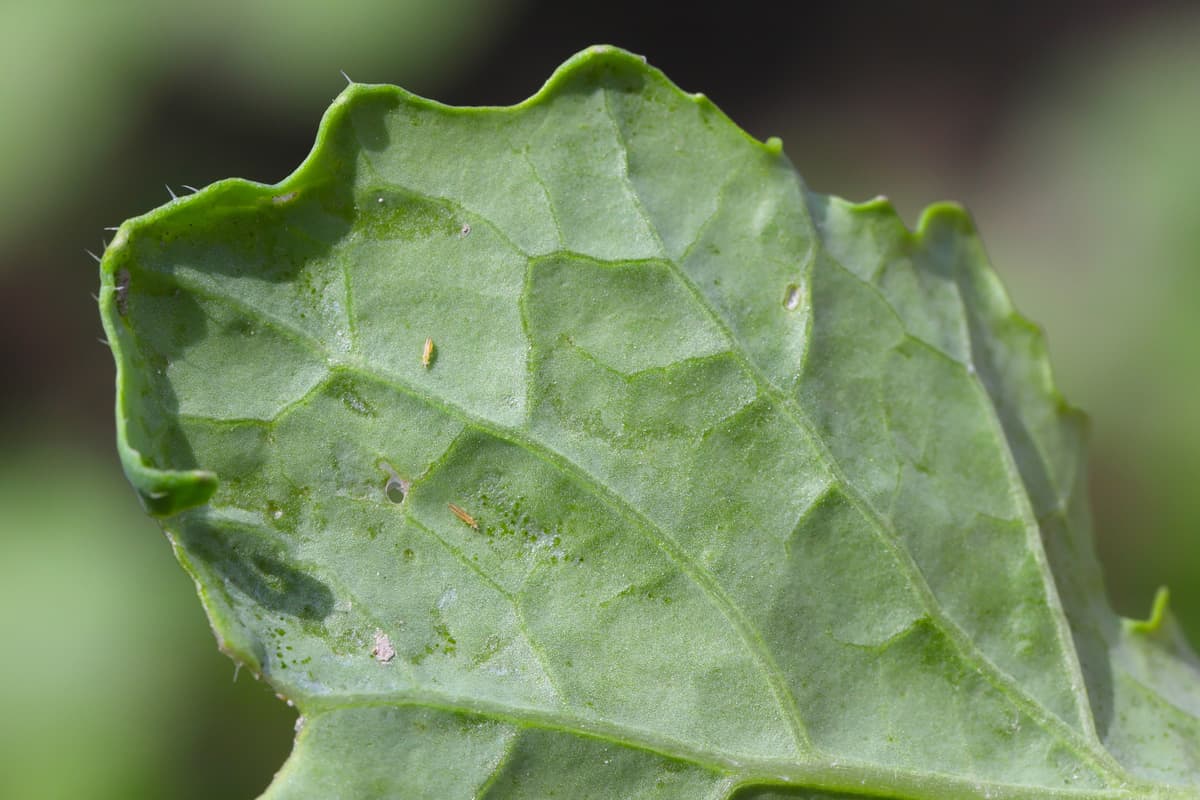
The number of eggs that thrips lay per day may vary depending on the species of thrips, the age of the female, and environmental conditions. In general, female thrips can lay several eggs per day, with some species laying up to 50 eggs during their lifespan.
The western flower thrips (Frankliniella occidentalis) can lay up to 80 eggs during their lifespan.
Wrapping Things Up
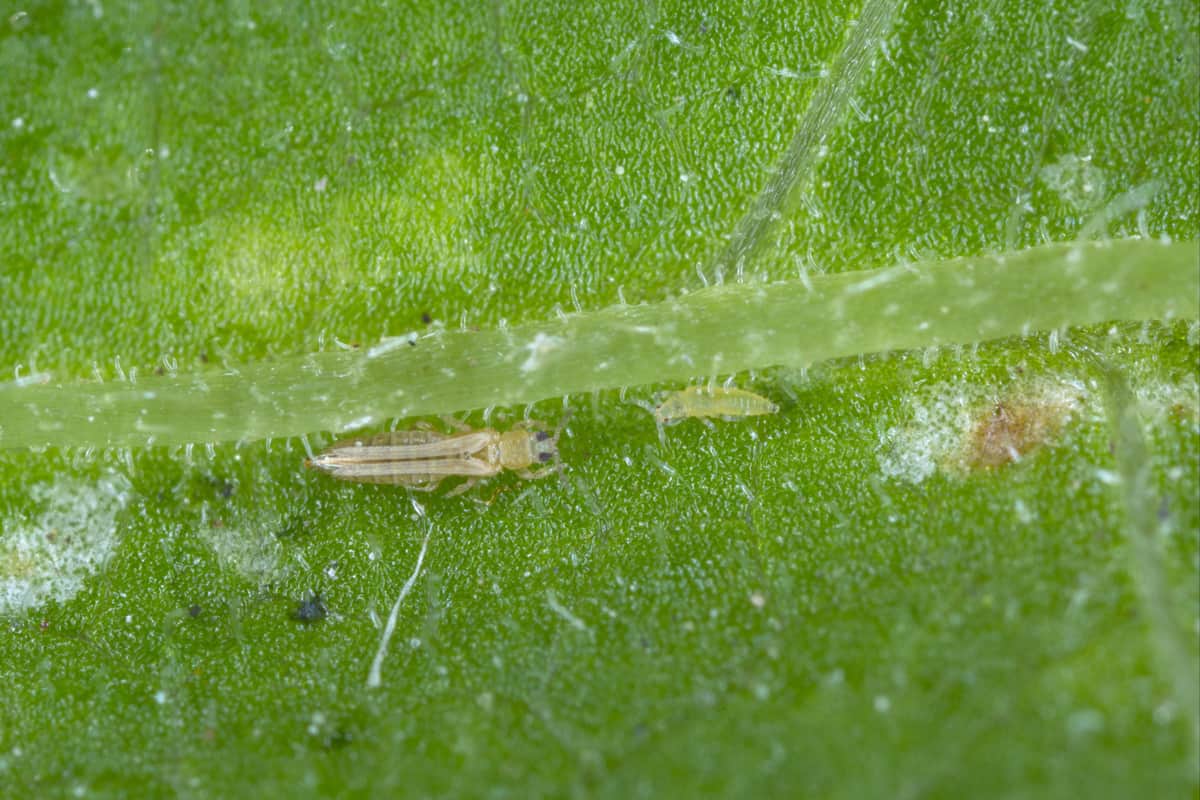
Plants are the primary source of life for thrips. They can survive for several days without a food source but won't be able to last long and will eventually die.
Although they are tiny, thrips can impose great damage to your plants. To protect your plants, you should try using insecticides and other pest control methods.
If you found this post helpful, check out these related articles!
Pesticides Vs. Insecticide – Which Is Best For Your Home Vegetable Garden?




